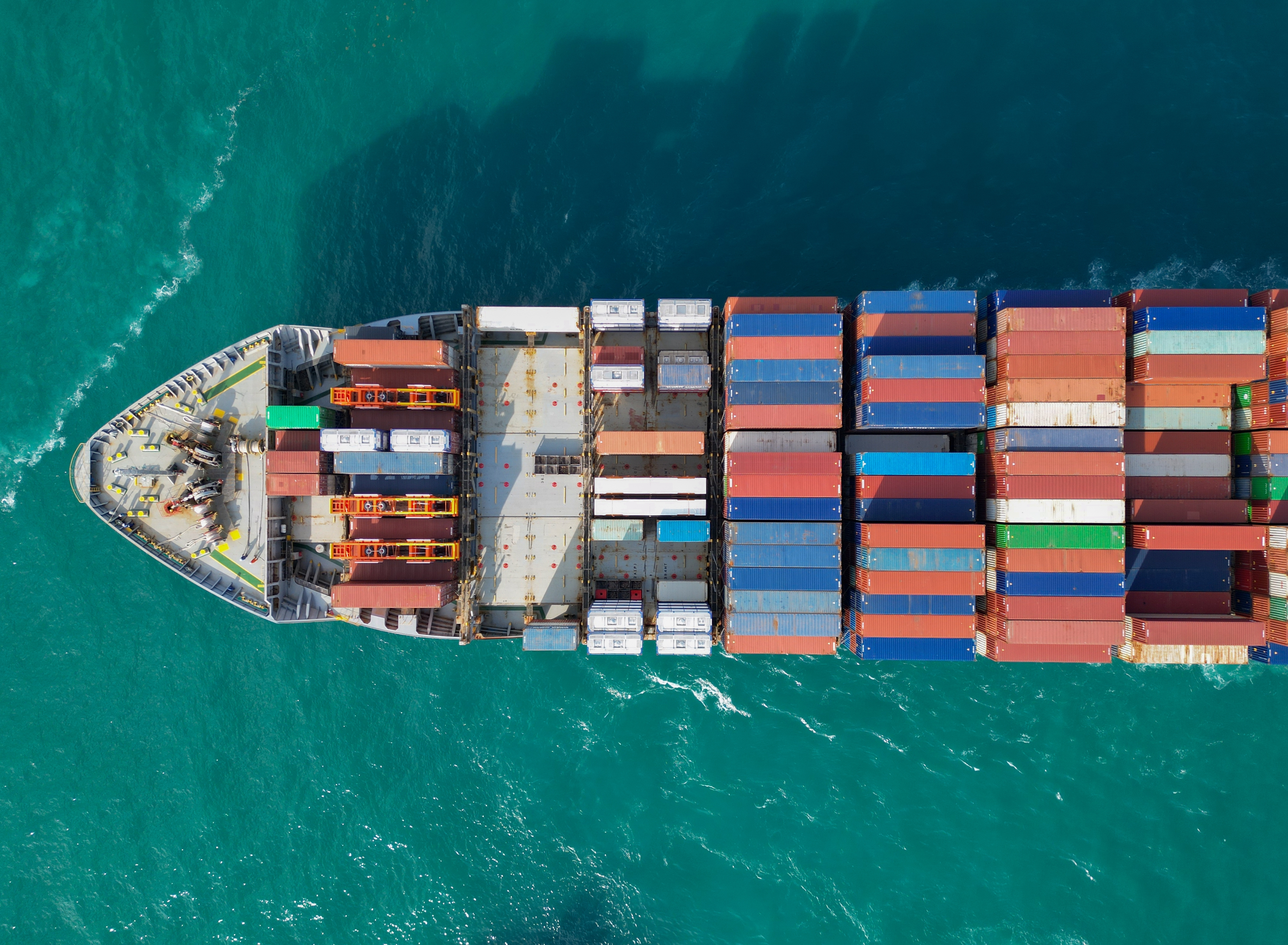FREIGHT FORWARDING
SOFTWARE
SOFTWARE
Moeiteloos beheren: alles-in-één software voor forwarders

Alle afhandeling in één krachtige oplossing
Als forwarder bent u een ware alleskunner. U beheert administratie, planning, douane en facturatie met gemak, en ontlast uw klanten van A tot Z. Om uw dagelijkse uitdagingen moeiteloos aan te kunnen, introduceert ELEVATE dé complete softwareoplossing voor luchtvracht, zeevracht, wegtransport en douaneactiviteiten. Snel schakelen was nog nooit zo eenvoudig.

Blijf in controle met Boltrics 3PL
In de jungle van documenten en regelgevingen wilt u vertrouwen op een systeem dat u overzicht geeft. Een systeem dat uw taken duidelijk weergeeft en uw processen stroomlijnt. Geen Excel-lijstjes die ergens verloren raken, maar altijd de juiste gegevens binnen handbereik. Met Boltrics 3PL heeft u zo’n systeem. Hiermee handelt u eenvoudig inkopen en verkopen van transportdiensten af. Van planning tot facturatie. En van enkele transportorders tot complete groupage opdrachten.

Samen voor de winst
Profiteren van collega’s in de markt. Samen als peloton naar de top. Dat is de gedachte. Dé oplossing voor freight forwarding is ontwikkeld met input vanuit de gehele logistieke branche. Versterkt door de vertrouwde kracht van het Microsoft Dynamics platform. Ruim 380 klanten gingen u voor. Wat resulteert in een complete oplossing vol bestaande functionaliteit waar u in no-time op kunt aanhaken. Opnieuw het wiel uitvinden is dus nergens voor nodig. Dat hebben wij al voor u gedaan. Ontdek hoe de branchestandaard bijdraagt aan uw succes.

Ondersteun uw processen met de laatste technologie

-
Het erkende Microsoft Dynamics platform garandeert een hoge mate van betrouwbaarheid en flexibiliteit. Een stevige basis voor een top-notch Freight Forwarding software. Bovendien werken uw gebruikers met de vertrouwde look & feel die ze kennen van Microsoft Office.
-
Of uw fulfilment activiteiten nu toenemen of klanten bij u aankloppen met nieuwe wensen. Met onze FMS module heeft u altijd eenvoudig inzicht in uw bedrijfsprocessen, houdt u uw kosten laag en speelt u moeiteloos in op klantvragen. Dankzij de modulaire opbouw kunt u eenvoudig functionaliteit toevoegen aan uw WMS. Wij bieden de tools. U doet de rest.
-
Switchen tussen schermen. Gegevens overtikken in een andere applicatie. Het is allemaal verleden tijd. Met het FMS heeft u een totaaloplossing in handen waarmee u al uw bedrijfsprocessen moeiteloos kunt ondersteunen. Van VAL-activiteiten tot opslag. Van facturatie tot HR.
Altijd up-to-date
Geen dure herimplementaties en geen verouderde software.
Met ons blijft u altijd up-to-date met de nieuwste Microsoft-technologie en de laatste logistieke functies.
De kracht van de Boltrics 3PL oplossing
Een user-friendly design voor intuïtieve interacties
Uw weg vinden in een nieuwe softwareapplicatie kan frustrerend en contraproductief zijn. Daarom bouwt en vertrouwt onze oplossing op het krachtige Business Central-platform van Microsoft. Een systeem dat flexibiliteit koppelt aan een hoge mate van stabiliteit en gebruiksvriendelijkheid. Zodat elke interactie natuurlijk aanvoelt. Met de toevoegingen van ELEVATE staat uw logistieke processen op de voorgrond, en is het gemakkelijker dan ooit om taken met vertrouwen uit te voeren. Of u nu een technisch onderlegde professional bent of een beginnende gebruiker.
Een snelle adoptie dankzij een naadloze ervaring
Verandering en innovatie moet spannend zijn, niet intimiderend. Onze softwareoplossing is zo ontworpen dat deze naadloos af te stemmen is op uw workflow, waardoor steile leercurves worden voorkomen en de tijd die nodig is om bekend te raken met de applicatie wordt verkort. Met een scala aan how-to blogs en video’s, de Boltrics Academy en een adequaat supportteam bent u in een mum van tijd aan de slag.
Een schaalbare oplossing, voorbereid op groei
Uw succes is onze prioriteit. Daarom hebben we een softwareoplossing ontwikkeld die met u meegroeit. Of u nu dé logistieke specialist bent in uw niche of een wereldwijde speler, onze schaalbare architectuur zorgt ervoor dat de software met uw behoeften meegroeit. Naarmate uw bedrijf zich uitbreidt, past onze oplossing zich moeiteloos aan naar het toegenomen gebruik, datavolumes en de vraag. Zo voorkomt u dat uw oplossing binnen een mum van tijd verouderd is.

5 onmisbare trends voor freight forwarders in 2024
De wereld van freight forwarders staat op het punt om flink door elkaar geschud te worden! Mondiale economische verschuivingen, technologische innovaties en veranderende consumentenverwachtingen zorgen voor een dynamisch speelveld dat nooit stil staat. In deze blog nemen we u mee langs de vijf belangrijkste trends die de toekomst van freight forwarders in 2024 en daarna zullen bepalen. Wilt u het verschil maken? Dan is het cruciaal om op deze trends te anticiperen.
Lees meer
Houd zeeën van tijd over : kopieer gegevens direct naar uw in-/uitslagen
Ontdek hoe je tijd kunt besparen en fouten kunt verminderen in je import- en exportprocessen. Met onze oplossing kopieer je gegevens direct naar je inslagen en uitslagen, waardoor je de efficiëntie in je magazijn verhoogt en je processen vereenvoudigt.
Lees meer
Taak gestuurd werken met Events & Milestones in Boltrics FMS
U kent het wel: uw bureau volgestapeld met orderbakjes, elk gevuld met papieren dossiers. Transportopdrachten en zendingsgegevens zijn netjes maar toch onoverzichtelijk gesorteerd in bakjes, volgens een systeem dat alleen u begrijpt. Dit was het leven van een freight forwarder in het verleden. Maar tijden veranderen. En moderne technologie helpt u nu om uw werk te stroomlijnen. Geen eindeloos gezoek meer in fysieke orderbakjes naar die ene klant die u nog moet bellen. Met Boltrics FMS werkt u taakgericht en past u Events & Milestones toe in uw zeevracht-, luchtvracht- of wegtransportprocessen.
Lees meerMaak uw werk gemakkelijker met de FMS module
Wilt u meer informatie over FMS? Vul eenvoudig het formulier in, en we nemen snel contact met u op om een afspraak te maken.